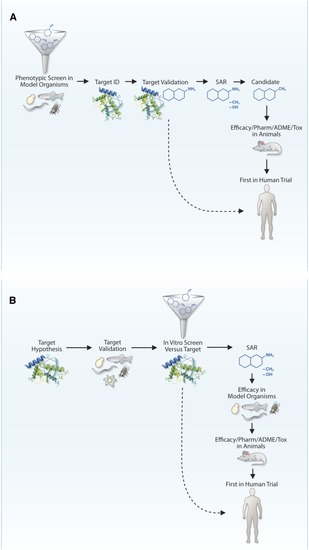Figure 1
- ID
- ZDB-FIG-190723-2196
- Publication
- Strynatka et al., 2018 - How Surrogate and Chemical Genetics in Model Organisms Can Suggest Therapies for Human Genetic Diseases
- Other Figures
- All Figure Page
- Back to All Figure Page
|
Outside-in and inside-out approaches to drug discovery for genetic diseases. (A) Outside-in screens start with a small-molecule screen |

